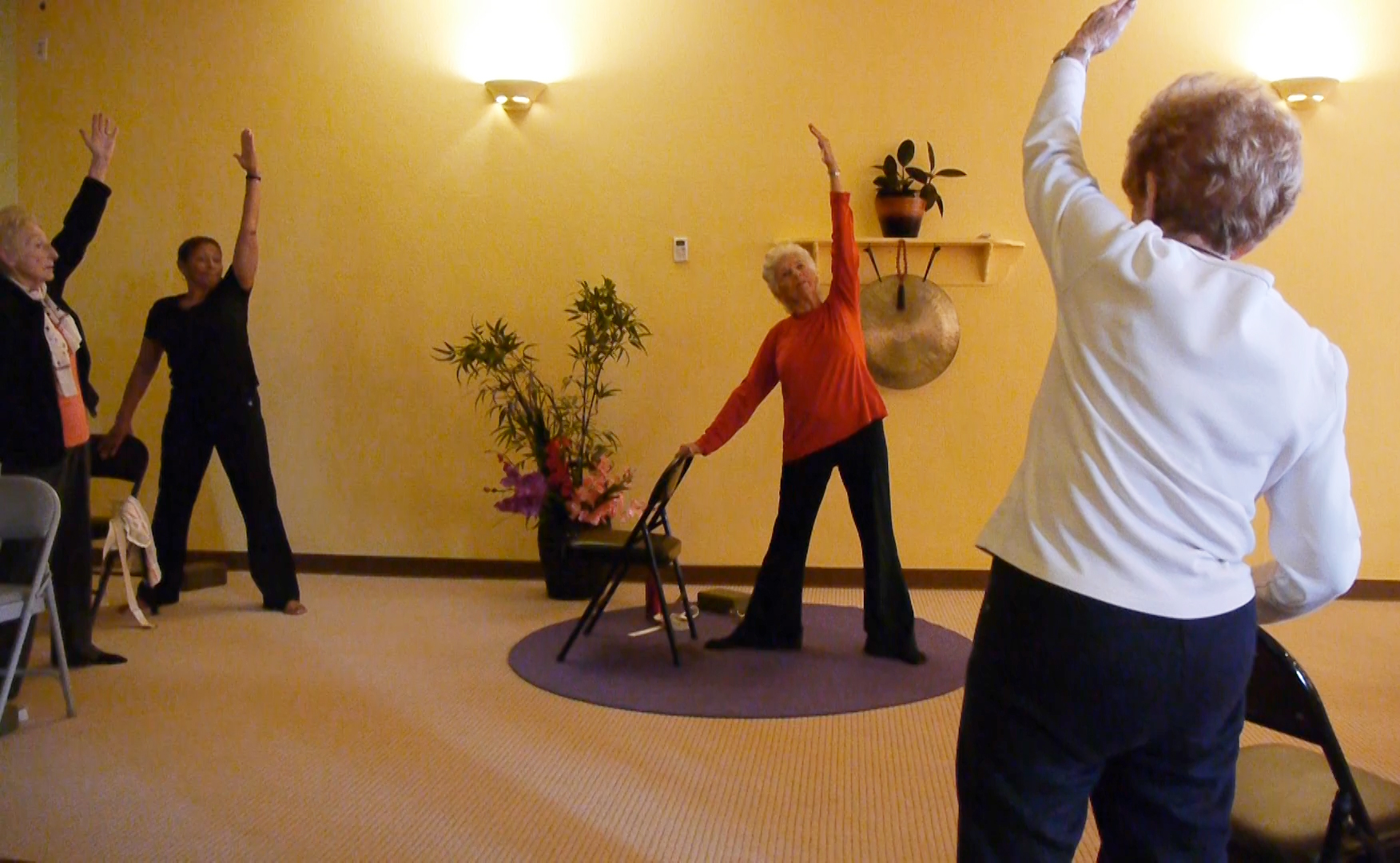Have you taught Chair Yoga (with a standing part of class) to people with serious sight impairments or who are blind?
Question
Have you taught Chair Yoga (with a standing part of class) to people with serious sight impairments
or who are blind? I teach part-time at a nearby VA and we are going to integrate some students like this into my
regular class. Most are over the age of 60 and several use walkers and scooters so they have mobility impairments too.
I liked the idea of a separate class but my Supervisor wants to try to integrate them due to our budget.
They will have a “Coach” with them. There are 4 students coming into my class and there are 2 coaches.
(Currently the regular class is very small, another reason we are thinking of having them join this class.)
Apparently the coaches are accustomed to touching the students to help them with a balance class they take.
We typically don’t touch the veterans due to PTSD etc.
Any thoughts or recommendations?
Thank you,
Linda C.

Answer
From Sherry
Hi Linda! SO wonderful to hear from you! I am copying two lovely Chair Yoga teachers who have experience teaching Chair Yoga to the blind. Paula and Cheryl! I will have them weigh in on their thoughts to this issue, and then I will add my few comments as well.
Thanks for reaching out! I agree with the concern of not touching someone who is blind with PTSD. I have several blind people intermingled with my wheelchair classes and when they are present…I always make a very concerted effort to speak very clearly with lots of detailed instructions. I watch them to ensure that they seem to be connecting their movements to my instructions. Periodically I would say “great job Sylvia!” so that they know I am watching out for them.
Cheryl…Paula? Can you let us know what you think?
Thank you beautiful ladies!!
From Paula Montalvo
Thanks for including me in this subject. I taught Yoga to visually impaired adults at the Braille Institute in La Jolla for about 5 years. I can agree with everything Sherry advises.
It requires a great deal of detail in describing every posture and you may even find that some postures have too many details to use.
I made it a practice to rarely touch a student, and if I did, I would be sure to ask permission before doing so.
I also liked to comment on how well they were doing, mentioning names as much as possible.
Most of the postures were done seated in the chair, and when we stood up I was very clear that they were to hold on to the back of the chair.
I am sure they will enjoy yoga very much and it won’t be long before even the most severely impaired students will be smiling and looking forward to your class.
Love, Paula
From Cheryl Gary
I have been teaching at The Center for the Blind for over 9 years. Most are seniors, with a few younger students.
I agree with Paula and Sherry regarding the clarity of language. I do also practice with eyes closed, as a lot of us do in our own practice, everything I’m attempting to do with the class. I try and keep language simple, not too detailed. Changing obvious words of “looking over your shoulder”, to “turning your head in the direction of”, etc. I also reference seeing themselves from the inside out, being an “internal observer”, something we all practice, but that they can “see”.
As so many of my students are in varying stages of “sightedness” only one or two are completely blind, even if they don’t suffer from PTSD, they are all in stages of some anger (at their bodies) and fear. I always state in the beginning of class that I may walk around and possibly gently guide them if I see they may need it, and ask them to raise their hands if they do not want that.
I still stumble often over descriptive words, and am dyslexic, and they love to catch and correct me. Helps me know they are listening! Humor is really important!!! And I supply them lots of reasons, at my expense but in fun, to laugh.
Chair in front of chair is necessary in my class for standing postures. I am in a general purpose room with long tables and lots of chairs. So I have to be creative in structure and found making linear style lines of students serves the dual purpose of more space, and safety with the back of the chair from the person in front, an accessible place to hold on to for standing if needed.
Many of the students are handicapped as well. Alternatives are given, and anything we do standing, which is not always part of a class, those students can do sitting.
Breath work is the most important part of the class. Gives them a chance to collect themselves and let go of the struggle to just have gotten there that day. I always offer the option of just doing that during class. Give lots of kudos for where they are, where they have come from, to be there.

